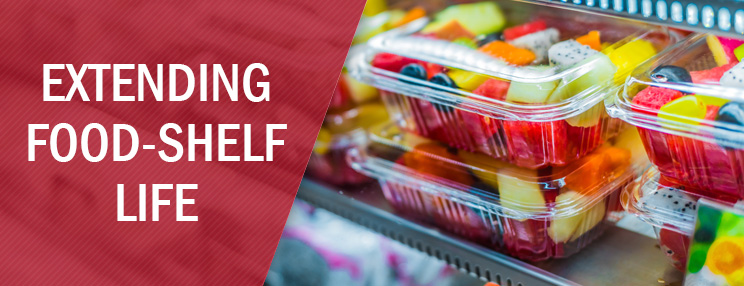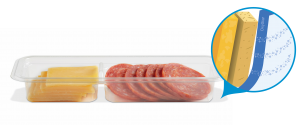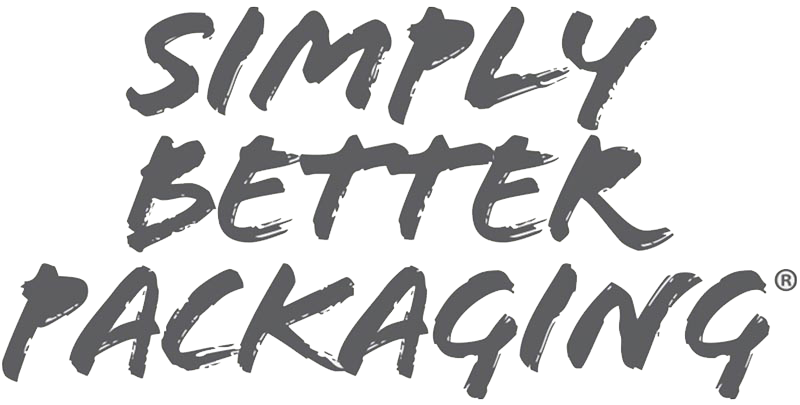OxyStar: Extending Food Shelf-Life

How Can We Keep Food Fresher Longer With Our Packaging?
By Catherine Haub
Talk of greenhouse gas emissions is rising due to how they change our climate, including global warming. More and more people are looking to lower their carbon footprint by living a more sustainable lifestyle, and one way to do that includes decreasing the amount of wasted food. Food waste is a large producer of greenhouse gas emissions, according to the United Nations. If food waste was its own country, it would be a global leader in greenhouse gas emissions behind China and the US, as it produces 3.3 billion tons of CO2e, so it is imperative to find a solution to lower the amount of food that is wasted [1]. Plastic helps reduce food waste and keeps food fresher for longer. An industry study found that cucumbers lasted 11 days, bananas lasted 21, and beef lasted 26 days longer in plastic packaging [1]. Those numbers show that plastic packaging is the key to keeping food fresher longer, overall cutting down on greenhouse gas emissions.
To keep food fresher for longer, many companies utilize barrier materials that block oxygen (which spoils food faster) out of the food, resulting in it staying fresher for longer and not being wasted. A common barrier is ethylene-vinyl alcohol copolymer, also known as EVOH. EVOH is a thermoplastic that is clear and flexible with a glossy appearance. It’s usually not found on its own due to high water permeability, so companies combine it with other forms of plastic such as PET or PP that have a higher water permeability but can’t keep out gases [2]. Though EVOH can combine with plastics that are recyclable, it cannot go through the recycling system, and when mixed with those types of plastic, they also cannot be recycled [2]. EVOH gums up the recycling machines, which causes issues for the other materials that are being recycled and cause a lower quality in those materials [3]. Since EVOH, when mixed with different types of plastics, is sandwiched between two layers, recyclers cannot remove it, so the whole product has to be thrown in the trash [2]. Though it does end up in the incinerator, it doesn’t release toxins when doing so like other products, so even though it is not recyclable, it could be worse for the environment [2]. But with all the other sustainability issues, companies are looking to create a material that has the same effect as EVOH but is recyclable.
Here at Placon, we have developed our own barrier material that keeps oxygen out while also having the ability to be thrown into the recycling bin. Our OxyStar barrier material utilizes multi-layer PET with an oxygen scavenging agent the binds oxygen with the sidewall of the package, slowing the flow of oxygen from the outside and products staying fresher for longer. Since we make it with PET, the product can be thrown in a normal recycling bin, resulting in less waste in landfills. OxyStar is a great packaging solution for meats, cheeses, food with high vitamin C content, and foods with high fat like nuts.
Resources:
[1]Microsoft Word – CRES_WhitePager_Plastics_05132022.docx (cresforum.org)
[2]EVOH Film (polymerdatabase.com)
[3]Is EVOH Recyclable? 10 Things You Should Know (Quick Answers) (citizensustainable.com)
ABOUT PLACON
Since 1966, Placon has been a leading designer and manufacturer of innovative and sustainable plastic packaging for medical, food, and consumer goods markets. Placon has manufacturing operations in Madison, WI; West Springfield, MA; Elkhart, IN; and Plymouth, MN, and is currently ranked in the Top 20 in Plastics News 2024 Thermoformers Rankings. Placon delivers packaging breakthroughs that inspire better engagement between people and products.






